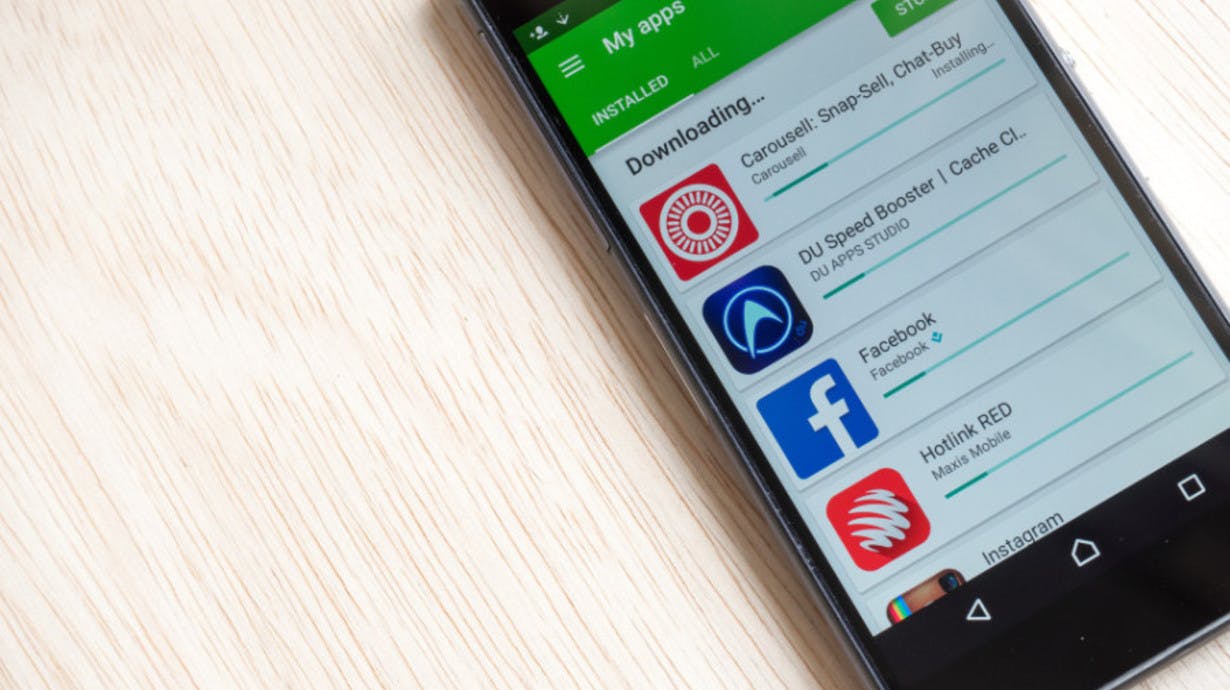The problem with app updates: Communication breakdown
While apps continue to make improvements from the time they launch, app stores don’t offer them a means to share progress within app updates.

While there are multiple channels for app distribution, the app store is the de facto interface layer between apps and a person’s OS. As marketers, we rely on the app store for discovery and even invest in ASO (app store optimization) tools so that our apps can end up in top apps lists and have a greater likelihood of getting noticed by customers.
The problem with relying on the app store as our interface layer is that it’s broken. Both Google Play and Apple treat their app store as though it’s any other store selling any other product. The experience is no different than your average eCommerce shopping experience. You can browse apps, read reviews, and if you’re interested, download these apps.
This approach doesn’t work because apps are not like normal tangible products we buy from places like Amazon or a store. The app you download today is not the app you will be using tomorrow. Apps are living breathing organisms, constantly updated and evolving.
While apps continue to make improvements from the time they launch, the app stores don’t offer them a means to share progress within updates. They merely just ask the developers what’s new about this release. We see it all the time when we upgrade an app: “bug fixes, improved sign up flow, etc.”
Behind each upgrade is a story, an improvement, a progression in UX. Whether it’s just a bug fix or a simple feature push those changes should be communicated with more context. Let’s begin to humanize the apps we build for people and get customers to engage not just with our software, but with developers, marketers, and product people who are the driving force behind these improvements.
Today, when developers push major product upgrades they might write a blog post explaining the new UI or new feature. The post might be pushed to Medium or other channels, but it often gets pushed into outer space, away from the app itself. It never becomes part of the app store and it’s not recorded in the same place where one can download or update their app. It ends up being a piece of information that new and existing customers of the app can’t easily visit unless they search hard for it.
The app store doesn’t have a discovery problem, it has a communication problem. The value exchange when users are asked to update their app is broken. Customers are told please update something and given a few sentences of what’s new, but it’s not fair to ask customers to constantly update software and tell them so little about the new experience they’re getting. The app stores have tried to solve the problem of this broken value exchange by making it easier to update apps with auto updates, but that only treats the symptom of the problem and not the root cause.
So the question is, how can we make it easier to communicate what’s new and great about each app store update?


